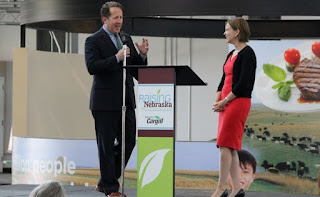2015 International Year of Soils
 Healthy soils are crucial for ensuring the continued growth of natural and managed vegetation, providing feed, fiber, fuel, medicinal products and other ecosystem services such as climate regulation and oxygen production. Soils and vegetation have a reciprocal relationship. Fertile soil encourages plant growth by providing plants with nutrients, acting as a water holding tank, and serving as the substrate to which plants anchor their roots. In return, vegetation, tree cover and forests prevent soil degradation and desertification by stabilizing the soil, maintaining water and nutrient cycling, and reducing water and wind erosion. As global economic growth and demographic shifts increase the demand for vegetation, animal feed and vegetation by products such as wood, soils are put under tremendous pressure and their risk of degradation increases greatly. Managing vegetation sustainably--whether in forests, pastures or grasslands--will boost its benefits, including timber, fodder and food, in a way that meets society's needs while conserving and maintaining the soil for the benefit of present and future generations. The sustainable use of goods and services from vegetation and the development of agroforestry systems and crop-livestock systems also have the potential to contribute to poverty reduction, making the rural poor less vulnerable to the impacts of land degradation and desertification.
Healthy soils are crucial for ensuring the continued growth of natural and managed vegetation, providing feed, fiber, fuel, medicinal products and other ecosystem services such as climate regulation and oxygen production. Soils and vegetation have a reciprocal relationship. Fertile soil encourages plant growth by providing plants with nutrients, acting as a water holding tank, and serving as the substrate to which plants anchor their roots. In return, vegetation, tree cover and forests prevent soil degradation and desertification by stabilizing the soil, maintaining water and nutrient cycling, and reducing water and wind erosion. As global economic growth and demographic shifts increase the demand for vegetation, animal feed and vegetation by products such as wood, soils are put under tremendous pressure and their risk of degradation increases greatly. Managing vegetation sustainably--whether in forests, pastures or grasslands--will boost its benefits, including timber, fodder and food, in a way that meets society's needs while conserving and maintaining the soil for the benefit of present and future generations. The sustainable use of goods and services from vegetation and the development of agroforestry systems and crop-livestock systems also have the potential to contribute to poverty reduction, making the rural poor less vulnerable to the impacts of land degradation and desertification.
Soils and Crops
 The symbiotic relationship between soils and vegetation is most apparent in the agricultural sector: food security and nutrition rely on healthy soils. The nutrient content of a plant's tissues is directly related to the nutrient content of the soils and its ability to exchange nutrients and water with the plant's roots. Similarly, plant growth is influenced to soil physical properties such as texture, structure and permeability. However, the practices of intensive agriculture, monoculture and deep tillage put soil health at risk by depleting the soil of nutrients, causing soil pollution, altering soil structure and water retention capacity, fostering soil erosion and decreasing soil biodiversity, which is the basis of soil biological activities. Soil degradation in agricultural systems is directly related to the overuse of fertilizers and pesticides, the removal of the crop residues from the soil surface and the use of heavy machinery. Additionally, nutrient depletion is related to the absence of the fallow period in intensive agricultural systems and to the practice of monoculture, which deplete soil nutrients due to static nutrient demand. Therefore, crop rotation is critical to preserving and eventually improving soil health. Crops protect soil against soil erosion agents, improve soil structure by rooting, and enrich soil nutrients by providing organic matter and establishing symbiotic relationships with soil bacteria. Sustainable soil management is thus critically important to addressing the growing food demand caused by population growth.
The symbiotic relationship between soils and vegetation is most apparent in the agricultural sector: food security and nutrition rely on healthy soils. The nutrient content of a plant's tissues is directly related to the nutrient content of the soils and its ability to exchange nutrients and water with the plant's roots. Similarly, plant growth is influenced to soil physical properties such as texture, structure and permeability. However, the practices of intensive agriculture, monoculture and deep tillage put soil health at risk by depleting the soil of nutrients, causing soil pollution, altering soil structure and water retention capacity, fostering soil erosion and decreasing soil biodiversity, which is the basis of soil biological activities. Soil degradation in agricultural systems is directly related to the overuse of fertilizers and pesticides, the removal of the crop residues from the soil surface and the use of heavy machinery. Additionally, nutrient depletion is related to the absence of the fallow period in intensive agricultural systems and to the practice of monoculture, which deplete soil nutrients due to static nutrient demand. Therefore, crop rotation is critical to preserving and eventually improving soil health. Crops protect soil against soil erosion agents, improve soil structure by rooting, and enrich soil nutrients by providing organic matter and establishing symbiotic relationships with soil bacteria. Sustainable soil management is thus critically important to addressing the growing food demand caused by population growth.
Key Facts
- 75-90 percent of people in developing countries depend on natural products as their only or main source of medicine.
- The use of solid biofuels--including wood--is predicted to grow by 300 percent between 2007 and 2030.
- About 20 percent of the world's pastures and rangelands, with more than 70 percent of the rangelands in dry areas, have been degraded to some extent.
- Forests provide livelihoods for more than a billion people and are vital for conservation of biodiversity, energy supply, and soil and water protection.





























